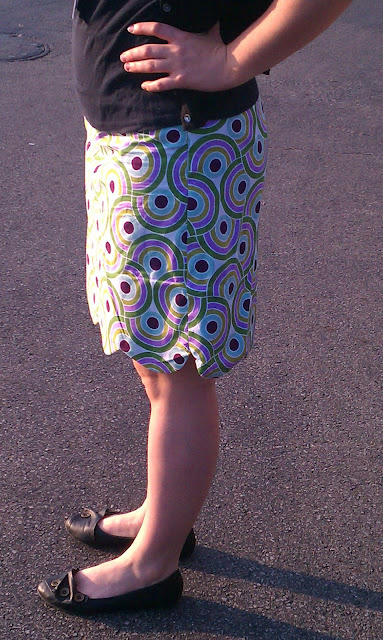Happily, this first draft turned out better than I dared hope. For those of you who don't know, this is the first pattern in the Colette Sewing Handbook. The book recommends using a heavy fabric that will hold its shape well, particularly the scalloped hem. Because I just wanted to practice before sewing my actual skirt, this is made from quilting cotton - Alexander Henry's Bauhaus fabric, something I won for participating in a sew-along. I really love the print of this fabric, but I knew that, because it was free, I wouldn't feel bad if I messed up. Another somewhat important fabric note - the book requires 2 1/4 yards of fabric for this pattern, but I used much less - about 1 2/3 yards. I usually try to fit my pieces together as closely as possible, and since this was a non-directional fabric, I was able to use my space pretty efficiently. So, depending on your size, you may find that you can construct your garment with less yardage.
The Meringue is fairly simple to sew, a few darts, an invisible zipper, and carefully sewn scallops are the highlights of the instructions. It makes sense that this pattern is at the beginning of the book - it's a really good foundation piece that is also visually interesting. The most time consuming part of the pattern is the hand sewing that is involved. The top of the hem facing is attached using a catch stitch - so many tiny stitches are involved!
 |
| Catch Stitches |
I don't really feel that it's right to call this skirt a muslin anymore - I really love it! I'm hoping that I'll have time to do another Meringue in a fancier fabric in the near future. But for now, Joanna is bugging me about making (another!) new skirt for her. Until next time!





Very cute and nicely done! I have yet to try those patterns... I really love the scallops.
ReplyDeleteThank you! Aside from the time-consuming catch stitching, it was a quick and easy project!
Delete